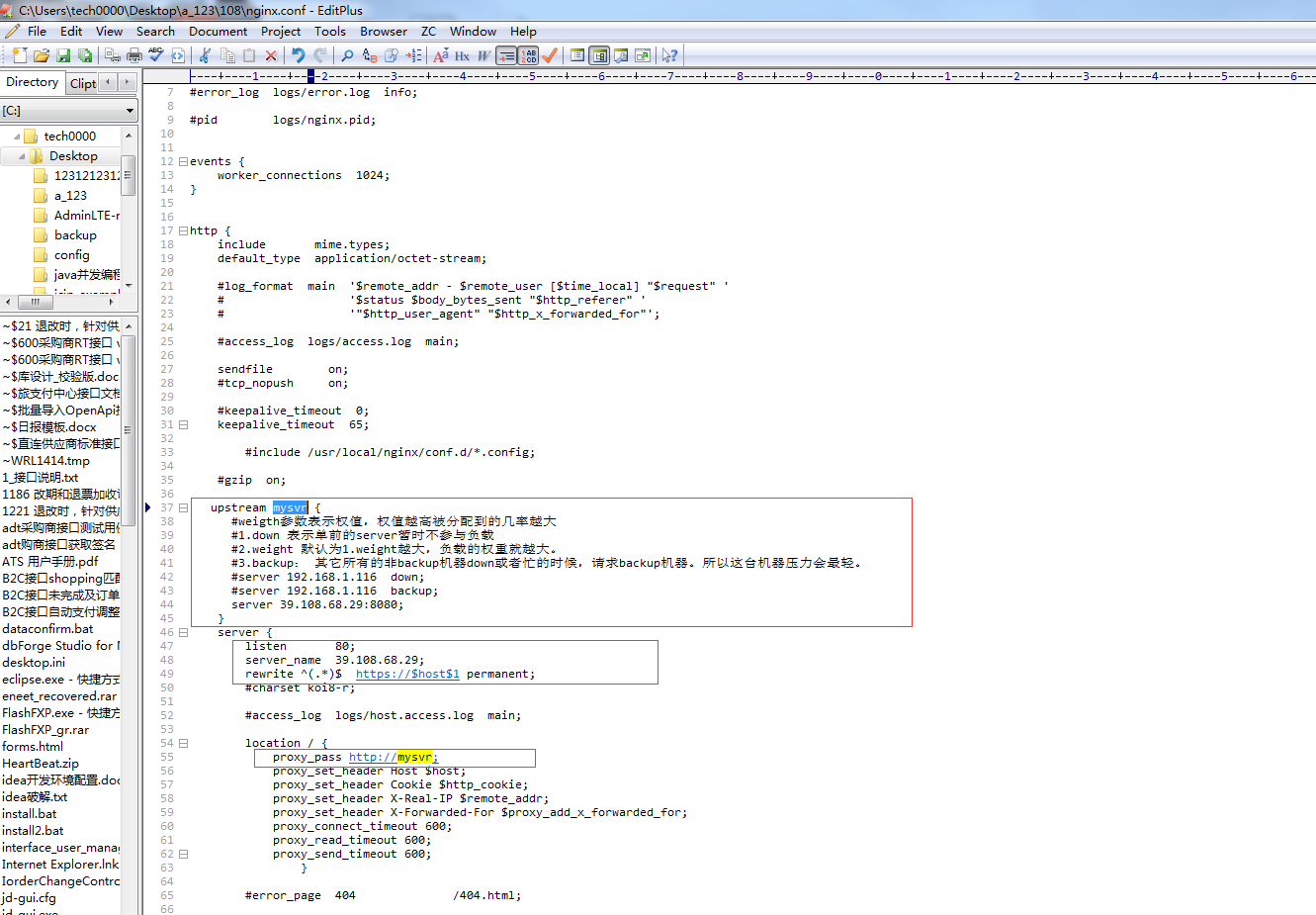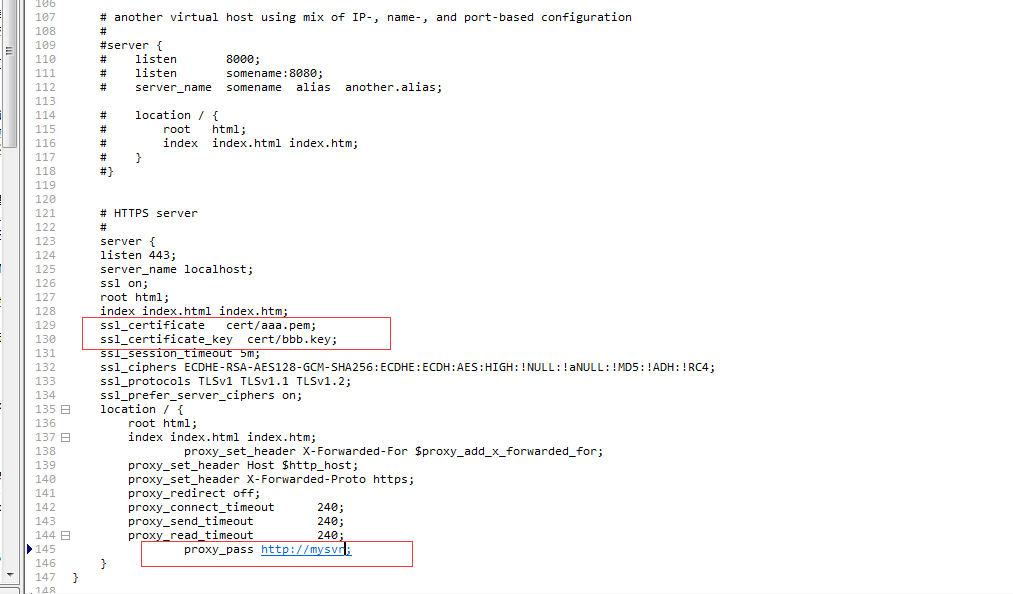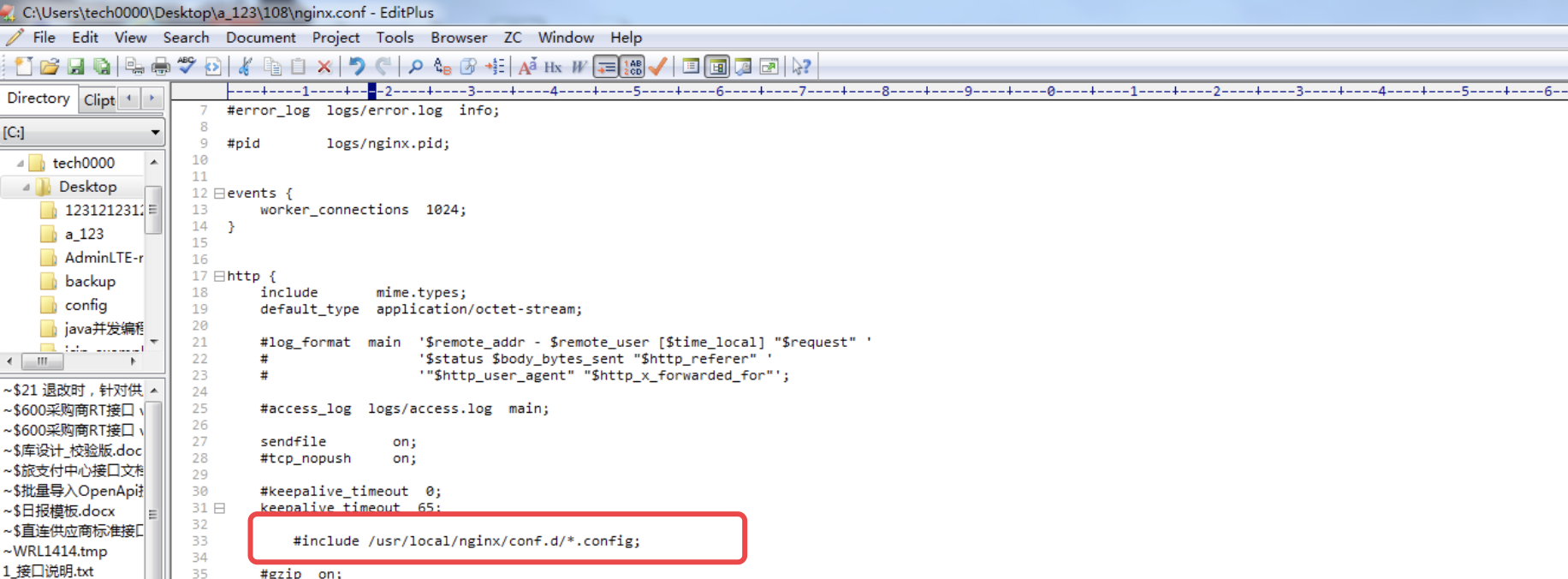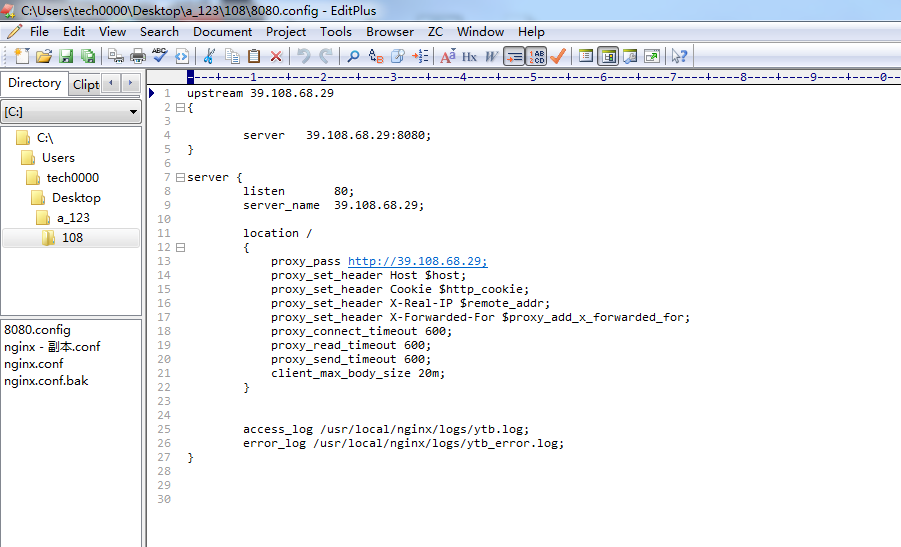This article mainly introduces how to use nginx to configure tomcat and https ssl certificates.
Mode 1: directly modify the nginx.conf file under the conf file of nginx

You can directly copy the entire server node as follows, and change the certificate in the red box to your own.
#user nobody;
worker_processes 1;
#error_log logs/error.log;
#error_log logs/error.log notice;
#error_log logs/error.log info;
#pid logs/nginx.pid;
events {
worker_connections 1024;
}
http {
include mime.types;
default_type application/octet-stream;
#log_format main '$remote_addr - $remote_user [$time_local] "$request" '
# '$status $body_bytes_sent "$http_referer" '
# '"$http_user_agent" "$http_x_forwarded_for"';
#access_log logs/access.log main;
sendfile on;
#tcp_nopush on;
#keepalive_timeout 0;
keepalive_timeout 65;
#include /usr/local/nginx/conf.d/*.config;
#gzip on;
upstream mysvr {
#The weight parameter represents the weight. The higher the weight, the greater the probability of being assigned
#1.down indicates that the server before the order does not participate in the load temporarily
#2.weight is 1 by default. The greater the weight, the greater the weight of the load.
#3.backup: request the backup machine when all other non backup machines are down or busy. So this machine will have the least pressure.
#server 192.168.1.116 down;
#server 192.168.1.116 backup;
server 39.108.68.29:8080;
}
server {
listen 80;
server_name 39.108.68.29;
rewrite ^(.*)$ https://$host$1 permanent;
#charset koi8-r;
#access_log logs/host.access.log main;
location / {
proxy_pass http://mysvr;
proxy_set_header Host $host;
proxy_set_header Cookie $http_cookie;
proxy_set_header X-Real-IP $remote_addr;
proxy_set_header X-Forwarded-For $proxy_add_x_forwarded_for;
proxy_connect_timeout 600;
proxy_read_timeout 600;
proxy_send_timeout 600;
}
#error_page 404 /404.html;
# redirect server error pages to the static page /50x.html
#
error_page 500 502 503 504 /50x.html;
location = /50x.html {
root html;
}
# proxy the PHP scripts to Apache listening on 127.0.0.1:80
#
#location ~ \.php$ {
# proxy_pass http://127.0.0.1;
#}
# pass the PHP scripts to FastCGI server listening on 127.0.0.1:9000
#
#location ~ \.php$ {
# root html;
# fastcgi_pass 127.0.0.1:9000;
# fastcgi_index index.php;
# fastcgi_param SCRIPT_FILENAME /scripts$fastcgi_script_name;
# include fastcgi_params;
#}
# deny access to .htaccess files, if Apache's document root
# concurs with nginx's one
#
#location ~ /\.ht {
# deny all;
#}
}
#server {
# listen 80;
# server_name www.yitaobei.cn;
# return 301 https://$server_name$request_uri;
#}
# another virtual host using mix of IP-, name-, and port-based configuration
#
#server {
# listen 8000;
# listen somename:8080;
# server_name somename alias another.alias;
# location / {
# root html;
# index index.html index.htm;
# }
#}
# HTTPS server
#
server {
listen 443;
server_name localhost;
ssl on;
root html;
index index.html index.htm;
ssl_certificate cert/14330112820728.pem;
ssl_certificate_key cert/214330112820728.key;
ssl_session_timeout 5m;
ssl_ciphers ECDHE-RSA-AES128-GCM-SHA256:ECDHE:ECDH:AES:HIGH:!NULL:!aNULL:!MD5:!ADH:!RC4;
ssl_protocols TLSv1 TLSv1.1 TLSv1.2;
ssl_prefer_server_ciphers on;
location / {
root html;
index index.html index.htm;
proxy_set_header X-Forwarded-For $proxy_add_x_forwarded_for;
proxy_set_header Host $http_host;
proxy_set_header X-Forwarded-Proto https;
proxy_redirect off;
proxy_connect_timeout 240;
proxy_send_timeout 240;
proxy_read_timeout 240;
proxy_pass http://mysvr;
}
}
}

Mode 2: reference external files in nginx.conf under the conf file of nginx

upstream 39.108.68.29
{
server 39.108.68.29:8080;
}
server {
listen 80;
server_name 39.108.68.29;
location /
{
proxy_pass http://39.108.68.29;
proxy_set_header Host $host;
proxy_set_header Cookie $http_cookie;
proxy_set_header X-Real-IP $remote_addr;
proxy_set_header X-Forwarded-For $proxy_add_x_forwarded_for;
proxy_connect_timeout 600;
proxy_read_timeout 600;
proxy_send_timeout 600;
client_max_body_size 20m;
}
access_log /usr/local/nginx/logs/ytb.log;
error_log /usr/local/nginx/logs/ytb_error.log;
}

Explain the meaning of some parameters in detail
Listen: indicates the port the current proxy server listens to. The default port is port 80. Note that if we have configured multiple servers, the configuration of this listen is not the same, otherwise we can not determine where to go.
server_name: indicates where we need to go after listening. At this time, we will go directly to the local area and the nginx folder.
location: indicates the matching path, where / is configured to indicate that all requests are matched here
Root: if root is configured, it means that when matching the path of the request, corresponding files will be found in this folder, which is very useful for our later static file servo.
index: when no home page is specified, the specified file will be selected by default. It can have multiple files and be loaded in order. If the first one does not exist, the second one will be found, and so on.